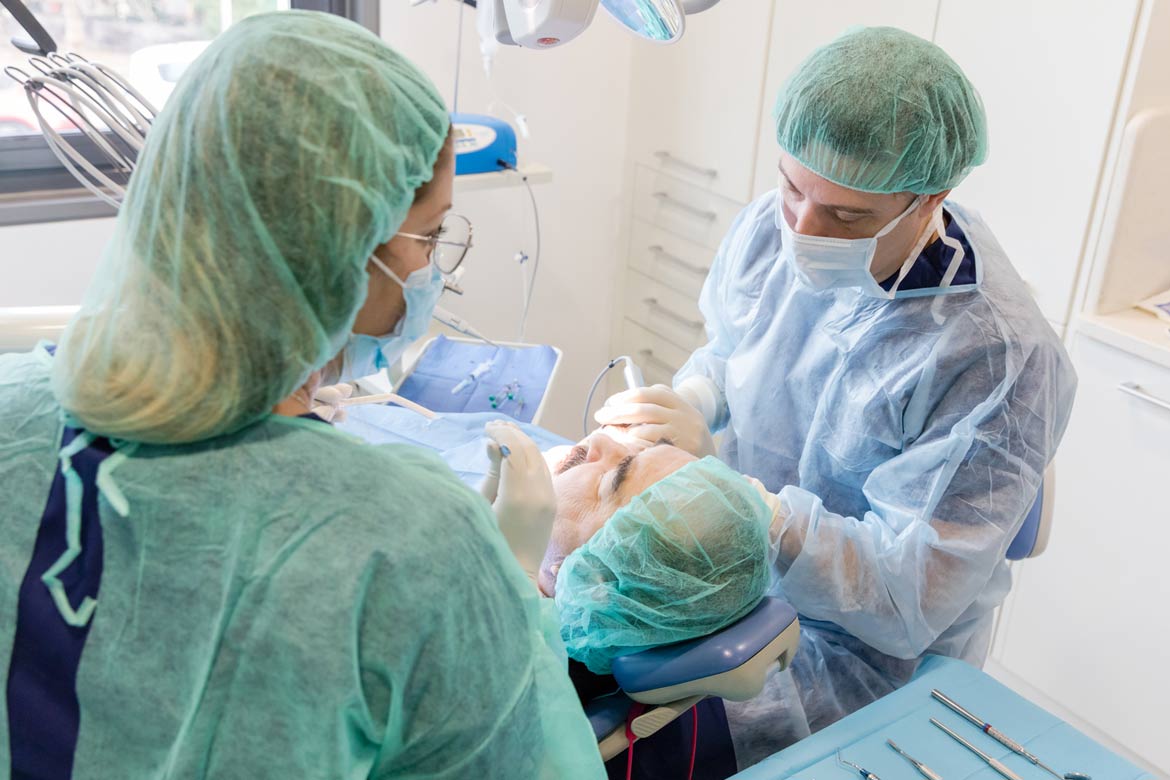Wisdom teeth removal
Do you want to solve your dental or facial problem?
Ask us for an appointment with free check-up and diagnosis
Whether you want to start treatment or request information, you are in the right place. Leave us your details and we will contact you within three hours.

Why extract wisdom teeth?
At Udemax dental clinics we encounter several situations that indicate the need to extract wisdom teeth whose eruption has not been optimal. The aim at all times is to avoid serious complications and damage to adjacent teeth or even facial nerves. Removal is therefore recommended:
In erupted wisdom teeth
When wisdom teeth are fully erupted, i.e. when they have the crown outside the gum and the root well located in the bone, but do not have enough space in the posterior position, they can exert more pressure on other teeth causing crowding. In addition, this problem can cause the patient to bite their gums when chewing and have poor oral hygiene, increasing the likelihood of diseases such as caries. Keeping these wisdom teeth would, in the medium term, damage the integrity of the rest of the teeth.
In semi-erupted wisdom teeth
When wisdom teeth have not fully erupted, i.e. the crown is partially outside the gum, food debris that is difficult to remove often gets in. This often leads to infection, causing inflammation and pain, a problem that if left untreated can extend to the bone, with more serious consequences.
In wisdom teeth including
When the tooth remains inside the bone, it can be: ectopic, if the tooth is in its place; or hererotopic, if it is in an anomalous position and out of place. These situations are very frequent in the population, but may go unnoticed as they do not cause pain. However, it is advisable to extract the included wisdom teeth, even as a preventive measure, because they can cause problems such as:
- Tooth malposition: the movement of teeth due to the pressure exerted by the wisdom teeth as they try to erupt.
- Tooth resorption or razalisis: the progressive loss of the root or crown of adjacent molars due to the pressure exerted by wisdom teeth.
- Or cysts: when the third molars become trapped in a follicular sac that can fill with fluid and cause increased pressure.
Phases of wisdom tooth extraction.
Wisdom tooth extraction is one of the most common oral surgery interventions that does not pose any great risk to the patient and helps to alleviate the symptoms (such as pain and inflammation) of the eruption process and prevent the consequences we have mentioned.
At this stage, the specialist should perform tests such as orthopantomography or CT scan to assess the correct location of the tooth, in order to proceed with the best extraction method.
On the day of the extraction, the first step is to administer anaesthesia. In some procedures, local anaesthesia is sufficient to ensure that the patient does not feel any discomfort during the procedure. If the patient is experiencing considerable stress or fear about the treatment, conscious sedation can be offered, which will allow them to remain awake but calm throughout the process. On the other hand, there are more complex procedures, such as the extraction of all four wisdom teeth and other cases where general anaesthesia is necessary.
Postoperative
Immediately after the operation, if local anaesthesia has been administered, it may take a few hours before feeling returns to the jaw. If general anaesthesia or sedation has been administered, you will need to be accompanied by another person.
As for recommendations to follow, as in most surgeries, it is important to take painkillers, antibiotics and mouthwash solutions administered by the specialist. It is likely that a soft diet will be advised for the first few days, as well as specific care in dental hygiene.
Sutures or absorbable stitches will disappear after a week, while non-absorbable stitches will require a return visit. In addition, in any case, the patient will be scheduled for a follow-up appointment to monitor progress. After that, maintenance should be as usual for the patient.










